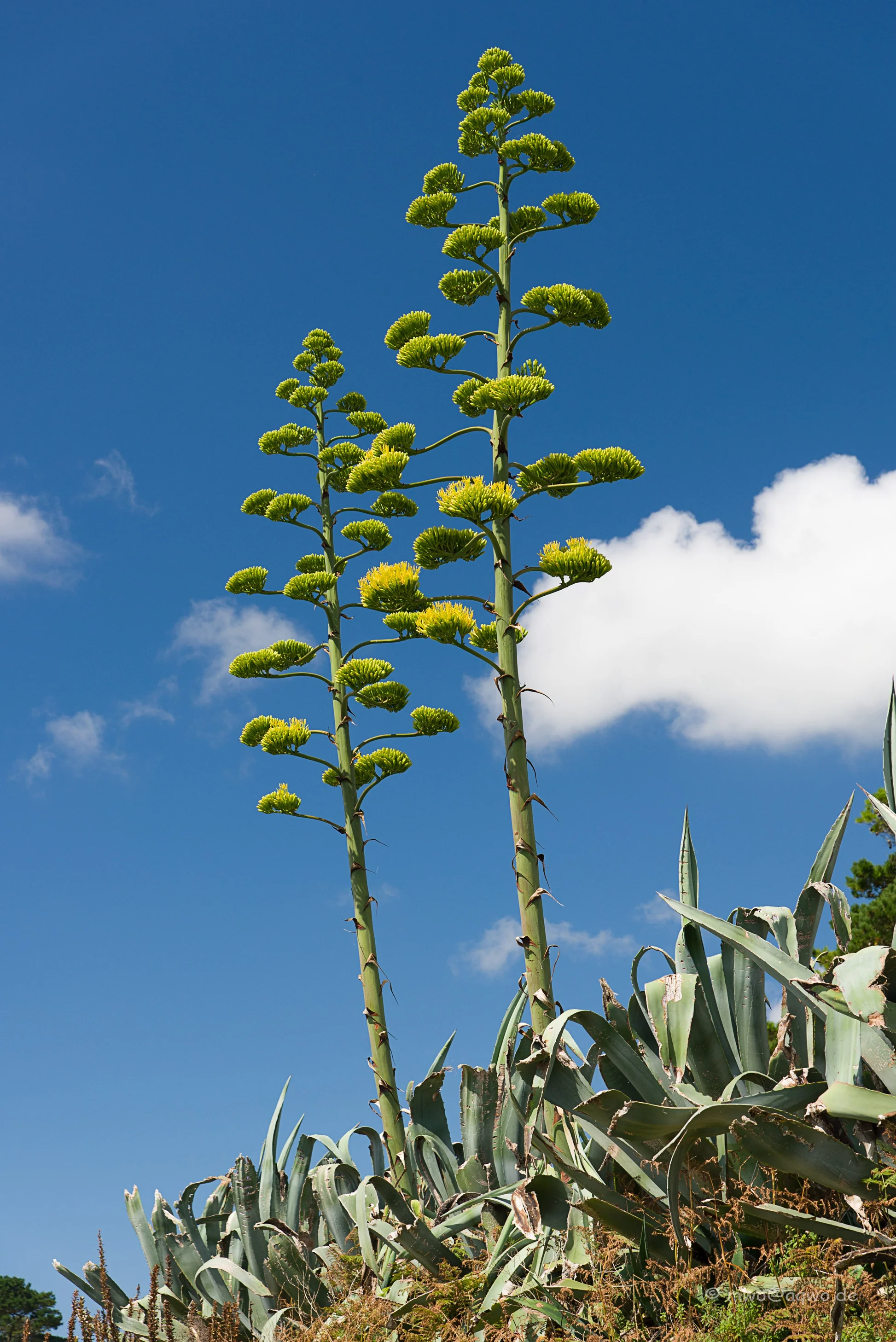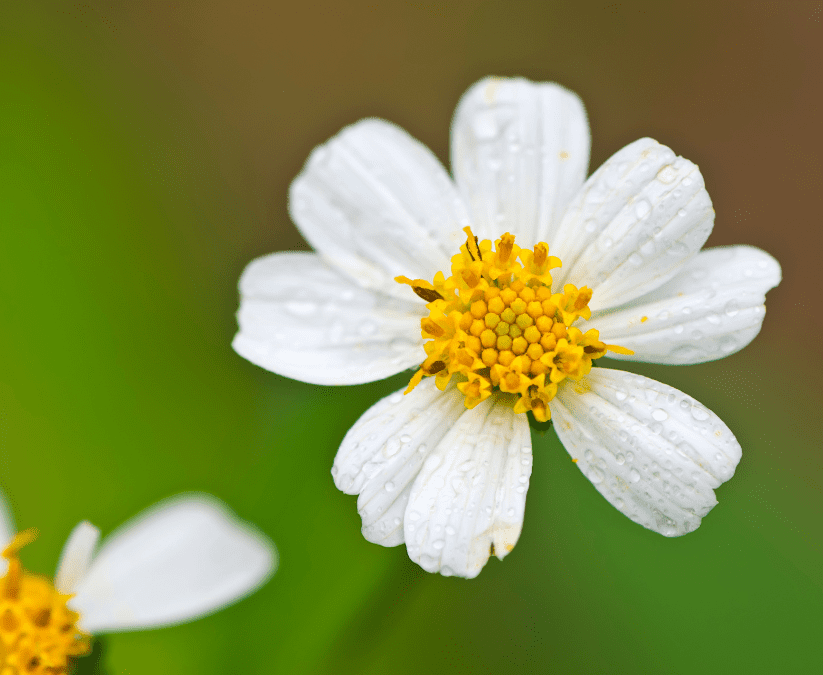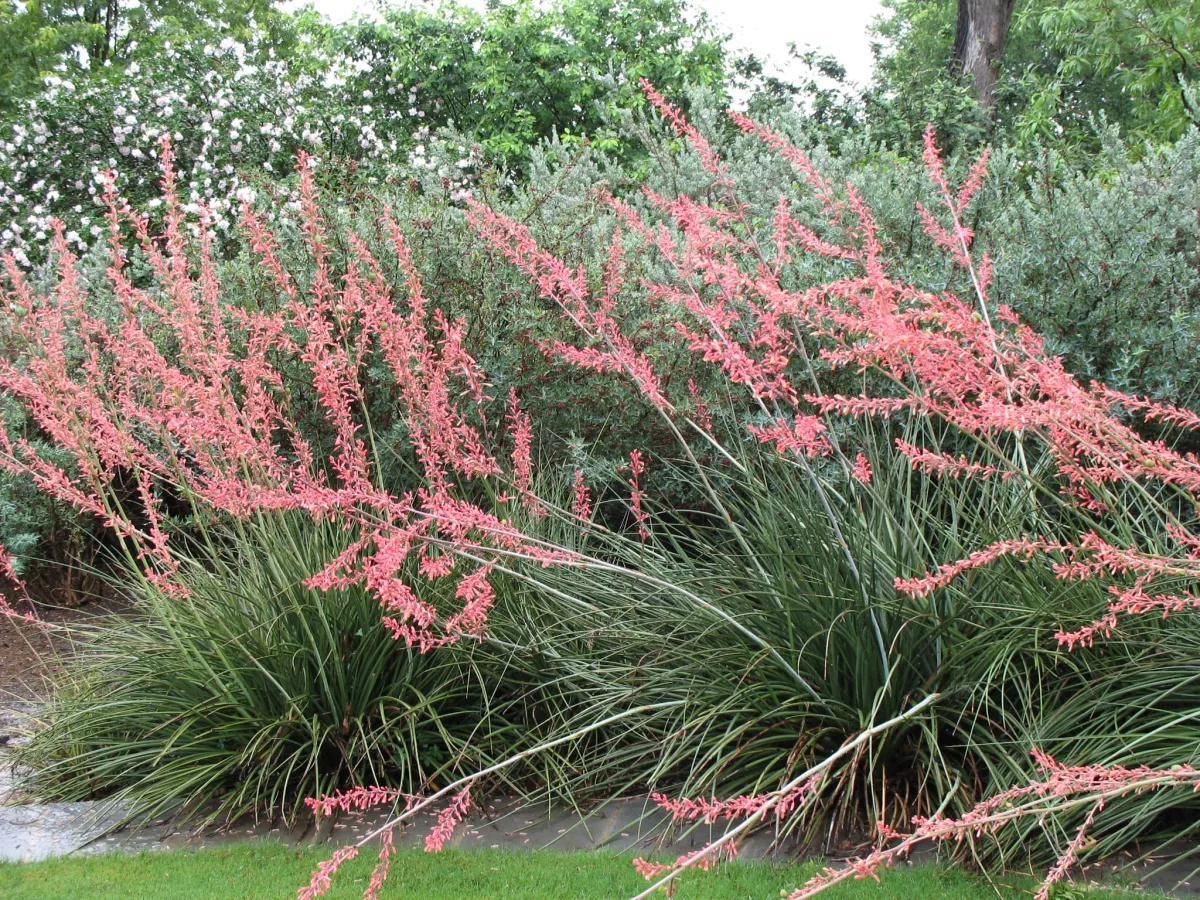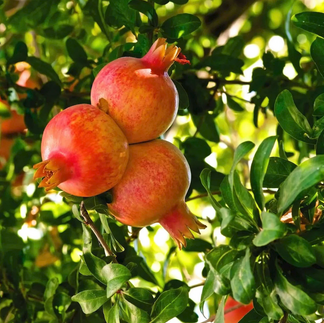Your 2025 Ultimate Guide to Choosing Drought-Tolerant Plants for Your Texas Landscape.
- NatureWorks
- Mar 31
- 11 min read
Updated: Apr 28

20 Drought-Tolerant Plants for Texas Landscapes
Texas is known for its hot, dry climate, making it essential for gardeners to choose plants that can withstand periods of drought. Many plants may survive near the coastal regions in accordance with the higher humidity levels, however don't last long in the rest of Texas's arid climate. Here’s a list of 20 plants that thrive in such conditions, ensuring your landscape remains vibrant and sustainable even during the hottest months no matter where you live.
1. Agave Americana (aka Century Plant)
Agave plants are succulents that store water in their leaves, making them extremely drought-resistant. They come in various sizes and shapes, adding architectural interest to Landscapes. The most common type of Agave is the Agave Americana (aka Century Plant) known for it's extreme hardiness to both drought and icy conditions. You can expect the towering bloom that can reach heights of 15-30ft (the bloom only) that will occur just once in this plant's lifetime, roughly 10-30 years of its maturity. With a plant hanging around that long, you can be sure of it's durability!
How to Buy: These are best purchased from your local nursery in 3-5 gallon sizes, due to their rapid growth and ability to obtain more plants off of their "pups".
2. Texas Bluebonnet (Lupinus texensis)
As the state flower of Texas, bluebonnets are not only beautiful but also drought-tolerant. They bloom in early spring and attract pollinators. These unique and historical flowers have a rich history in Texas, symbolizing Bravery and Sacrifice, which go hand in hand with Texas's coming to fruition. Bluebonnets are an annual, meaning they bloom once per year. Thousands of locals and tourists make their way to Texas's empty fields throughout the state to relish in the beauty of this massive blooming site to see. You can see many other native blooms during this time as well, such as the Indian Paint Brush. Want to grow your own Bluebonnets? Bluebonnets are best and mostly only available by seed.
How to Buy: You can find Bluebonnet seeds at almost any location in Texas that sells seeds.
3. Blackfoot Daisy (Melampodium leucanthum)
This perennial is a hardy bloomer with white flowers that thrive in poor soils and require minimal water once established. Let us reiterate, they thrive in POOR SOILS and require MINIMAL WATER. This is a species that can be rather frustrating for the overattentive gardener. With overwatering or rich soils, you will find that the Blackfoot Daisy loses its luster rather quickly.
How to Buy: These are best purchased from your local nursery in 1 to 3/5 gallon sizes. Due to their finicky behavior, you can often find them on sale once overgrown.
4. Red Yucca (Hesperaloe parviflora)
Red Yucca is a striking plant with tall flower spikes that attract hummingbirds. It thrives in full sun and poor soil conditions. The Red Yucca along with the Yellow Yucca can be a great addition to any Texas landscape, both residential and commercial due to its stunning and vibrant red flowers and minimal water and maintenance requirements. These plants are suitable for the beginner gardener as they are rewarding from very little effort.
How to Buy: These are best purchased from your local nursery in 1 to 3/5 gallon sizes, due to their rapid growth and ability.
5. Lantana (Trailing and Upright)
Lantana is a colorful flowering plant that is extremely drought-tolerant and attracts butterflies. It’s available in various colors and can be grown as a shrub or ground cover. Lantana makes the perfect clustered flowering shrubs to implement into your landscape, whether you want a simplistic or full look. These provide enough impact visually to surely become you and your visitor's favorite blooming beauty for years to come. They are perennials, meaning they will go dormant in the winter months and come back every Spring. The Lantana comes in both Trailing and Upright varieties, with many unique varieties and more being introduced every year. Our favorites for Landscapes include the Yellow, Confetti, Passion Fruit, Purple and White Lantanas.
How to Buy: These are best purchased from your local nursery in either 4" square pots, or 1 gal. They can be purchased larger, however their rapid growth will surprise you and a smaller plant size can be sufficient.
6. Mexican Feather Grass (Nassella tenuissima)
This ornamental grass is known for its fine texture and graceful movement in the wind. It requires little water and adds a soft touch to gardens. Mexican Feather Grass produces beautiful plumes that are soft and represent the classic Texas desert scape which is rich in all parts of Texas.
How to Buy: These are best purchased from your local nursery in either 1 or 3/5 gal. They can be purchased larger, depending on the need for immediate full effect or not.
7. Desert Willow (Chilopsis linearis)
This small tree produces beautiful, trumpet-shaped flowers and is well-suited for hot, dry climates. It’s also a great choice for attracting birds. This is another extremely drought tolerant plant that will require minimal watering. Too much watering can be detrimental to these trees, so be careful and let them thrive in poor soil and low watering conditions.
How to Buy: These are best purchased from your local nursery that specializes in trees, in either 15 gal or 30 gal. They can be purchased larger, however their rapid growth will surprise you and a smaller plant size can be sufficient.
8. Southern Wax Myrtle (Morella cerifera)
The Southern Wax Myrtle (Morella cerifera) is a broadleaf evergreen shrub or tree. The leaves are glossy green, flowers are inconspicuous and appear in early spring, followed by fruit in late summer through winter. The grayish-white fruits are small are heavily coated with wax and massed in clusters on the stems of the previous season’s growth. Wax Myrtles are tough, durable shrubs. They have no serious plant diseases or insect pests. Wax Myrtle grows very fast, sometimes as much as 5 feet in height and width in a single growing season. This tree produces a vibrant greenery aroma which can be a pleasant addition to your home's landscape. (Source: Green Thumbs Garden)
How to Buy: These are best purchased from your local nursery that specializes in trees, in either 15 gal or 30 gal. They can be purchased larger, however their rapid growth will surprise you and a smaller plant size can be sufficient.
9. Salvia (Salvia spp.)
Many species of salvia are drought-tolerant and provide vibrant blooms throughout the summer. They also attract pollinators like bees and butterflies. Salvia, similar to Lantana, provide a bountiful supply of color per shrub, making it the perfect pop for your Texas landscape. There are several colors / varieties to choose from, with our most popular client selection being the Hot Pink. Salvias are a perennial and come back year after year, with short intermittent foliage and flower loss in the winter months. These plants work great with drip irrigation and water restrictions.
How to Buy: These are best purchased from your local nursery in either 1 or 3/5 gallon sizes.
10. Vitex Tree (Vitex agnus-castus)
The vitex tree, also known as Chaste tree, is renowned for its drought tolerance, making it an excellent choice for arid climates. This tree produces beautiful flowers that are typically violet or lavender in color. These flowers bloom in dense clusters during the summer months, attracting pollinators such as bees and butterflies. The striking appearance of the flowers adds a vibrant touch to gardens and landscapes. The vitex tree grows best in well-drained soil and can reach heights of 10 to 20 feet, depending on the variety. Its deep root system allows it to access moisture from deeper soil layers, enabling it to thrive with minimal water. The tree is known for its low maintenance requirements, making it an excellent option for sustainable landscaping.
How to Buy: These are best purchased from your local nursery that specializes in trees, in either 15 gal or 30 gal. They can be purchased larger, however their rapid growth will surprise you and a smaller plant size can be sufficient.
11. Stonecrop (Sedum spp.)
Sedums are succulents that require very little water and come in various shapes and sizes. They’re perfect for rock gardens or ground cover. They can be replanted and separated over and over again, making for the perfect never ending plant.
How to Buy: These can be both found naturally in rocky areas near river embankments with sun exposure (do not tresspass and please take caution and care when naturally harvesting) as well purchased from your local nursery, in either 4" pots or 1 gallon sizes. They can be purchased larger, however their rapid growth will surprise you and a smaller plant size can be sufficient. You may also see them in larger decorative baskets, and that is your choice. They can take a while to get their fullness, so combining multiple 4" pots in a single larger pot is a great and cost effective idea versus buying ready to go decorative versions which can be on the pricier side.
12. Bicolor Iris (Dietes bicolor)
Bicolor Iris plants are stunning perennials known for their striking two-toned flowers that add vibrant color to gardens. These hardy plants are not only visually appealing but also exhibit excellent drought tolerance, coming back year after year and making them a great choice for low-water landscapes. Their unique blooms typically feature contrasting shades that can brighten up any space, attracting pollinators like bees and butterflies. Bicolor irises thrive in well-drained soil and can withstand periods of dryness, allowing them to flourish even in challenging conditions. With minimal maintenance, these resilient plants provide a spectacular display year after year.
How to Buy: These are best purchased from your local nursery in either 1 or 3/5 gallon sizes.
13. Crape Myrtle (Lagerstroemia)
Crape myrtles, known for their vibrant blooms and long flowering season, are popular ornamental trees and shrubs in Texas. They thrive in the state's warm climate and are drought-tolerant, making them an ideal choice for water-wise landscaping. These trees also provide excellent shade and can serve as natural privacy screens. Additionally, crape myrtles exhibit resistance to pests and diseases, reducing the need for chemical treatments. Their stunning fall foliage and attractive bark add year-round interest to gardens and landscapes. **Note: These trees SHED their flowers everywhere. :)
How to Buy: ***Each species grows vastly different in mature height, please confirm species with nursery or online before purchasing. These are best purchased from your local nursery that specializes in trees, in either 5 gallon, 15 gallon or 30 gallon. They can be purchased larger, however their rapid growth will surprise you and a smaller plant size can be sufficient. Often you will notice that the larger sizes might be a bit more "stringier" in appearance, although more established. If you see a 5 gallon version that looks nice and tall (4-6ft in height) and has lush green leaves and blooms, you can plant (3) 5 gallon trees in one single large hole, since the Crape Myrtle is a multi trunk tree anyways. This is also much more cost friendly than buying the larger trees.
14. Texas Mountain Laurel (Dermatophyllum secundiflorum)
Texas mountain laurels are native evergreen shrubs or small trees found primarily in the central and western regions of Texas. They are renowned for their stunning clusters of fragrant purple flowers that bloom in the spring, attracting various pollinators, including bees and butterflies. The foliage consists of dark green, glossy leaves that provide a lush appearance year-round. These plants are drought-tolerant and thrive in well-drained soils, making them ideal for xeriscaping. **Note: the seeds of the mountain laurel are toxic if ingested, adding an element of caution for curious wildlife and pets.
How to Buy: These are best purchased from your local nursery that specializes in trees, in either 15 gal or 30 gal. They can be purchased larger, however their rapid growth will surprise you and a smaller plant size can be sufficient.
15. Butterfly Bush (Buddleja davidii)
Butterfly bush is a magnet for butterflies and thrives in full sun with minimal water. Its long flower spikes add color to any garden.
How to Buy: These are best purchased from your local nursery in either 1 or 3/5 gallon sizes.
16. Pomegranate (Punica granatum)
The pomegranate tree is not only drought-tolerant but also produces delicious fruit. Its vibrant flowers attract pollinators as well.
How to Buy: These are best purchased from your local nursery that specializes in trees, in either 5 gallon or 15 gallon. Look for a plant with fruit already on it. This means you are getting a grafted tree (This plant was grown from a cutting off of a mature fruiting tree) can can yeild fruit on year one typically.
17. Spineless Prickly Pear Cactus (Opuntia ellisiana)
The spineless prickly pear cactus, known for its flat, paddle-shaped pads, is a unique succulent that thrives in arid environments. It produces sunset like flowers which eventually turn into delicious edible fruit that can be used to make jams and jellies, flavor drinks and much more. Unlike its spiny relatives, this cactus lacks sharp spines, making it a safer option for gardeners. However, it is important to note that deer may be drawn to this cactus, especially during dry spells when their thirst intensifies. The pads can provide a source of hydration, leading to potential overgrazing in areas where deer are prevalent. Gardeners should consider protective measures to safeguard their spineless prickly pear from hungry wildlife.
How to Buy: These are best purchased from your local nursery, in either 1 gallon or 3/5 gallon. Look for a plant with fruit already on it if you're lucky. With some proper cutting, you can propogate these cactuses by taking their new leaves and replanting them in soil for new plants. You CAN find these in nature, however there are many cactus varieties which do not product the flower or fruit, or might have viscious spines, so be on the lookout.
18. Golden Barrel Cactus (Kroenleinia grusonii)
The golden barrel cactus is a distinctive spherical cactus native to Mexico. Characterized by its bright yellow spines and vibrant green body, it can grow up to three feet in height and six feet in diameter. This resilient plant thrives in arid environments, making it a popular choice for desert gardens and indoor collections.
How to Buy: These are best purchased from your local nursery that specializes in cactus and desert type plants, in either 5 gallon or 7 gallon. You can purchase larger sizes, however these grow quickly and it is much more cost efficient to purchase the smaller sizes.
19. Texas Sage (Leucophyllum frutescens)
This resilient plant is well-suited to thrive in areas with low rainfall and poor soil quality, making it a popular choice for xeriscaping and low-maintenance gardens. One of the most striking features of Texas sage is its stunning display of purple flowers, which typically bloom in abundance following periods of rainfall. These vibrant blossoms not only add a splash of color to the landscape but also attract a variety of pollinators, including bees and butterflies, contributing to the local ecosystem's health and biodiversity. The flowering season can vary, but it often peaks in late spring and can continue sporadically throughout the summer and into the fall, especially after monsoonal rains. In addition to its aesthetic appeal, Texas sage is known for its aromatic foliage, which emits a pleasant scent when brushed against or crushed. Texas sage can grow to a height of 3 to 5 feet and can spread equally wide, forming a dense, bushy appearance that can serve as an effective privacy screen or windbreak.
How to Buy: These are best purchased from your local nursery, in either 5 gallon or 15 gallon.
20. Bamboo Muhly Grass (Muhlenbergia dumosa)
Bamboo Muhly Grass is a versatile ornamental grass known for its striking appearance and exceptional drought tolerance. This resilient plant thrives in arid conditions, making it an ideal choice for water-wise landscaping. Its dense, upright growth habit provides excellent screening, creating a natural privacy barrier in gardens and yards. With minimal maintenance requirements, Bamboo Muhly Grass is perfect for those seeking beauty and functionality in their outdoor spaces.
How to Buy: These are best purchased from your local nursery in either 5 gallon or 7 gallon gallon.
Conclusion
Choosing drought-tolerant plants for your Texas garden not only conserves water but also creates a sustainable and beautiful landscape. With these 20 plants, you can enjoy a vibrant garden that thrives even in the toughest conditions.
Images Courtesy of: House Beautiful, Douglass King Seeds, R&B Florida Seeds, Little Red Nursery, Texas Smartscape, Rainbow Gardens, Dave's Garden, Earthwise, AZ Plant Lady, Western Star Nurseries, Almost Eden, Plant Vine, Plant Master, Gardenia, Proven Winners, Buchanan's Native Plants, Baker Environmental Nursery, Wilson Tree and Landscape Nursery, Ojai Trees, Wikipedia, Womach Nursery, Progreen Services, Green Thumbs Garden, Plant Master, Waterwise Botanicals, American Meadows, Moon Valley Nurseries, Plant Me Green, LSU Ag Center, Garden Style San Antonio, Texas Tree Surgeons, The Plant Native, Landmark Wildlife Management, Plant House, Fast Growing Trees, The Palestinian Museum, Green Acres, The Cactus Outlet, Debra Baldwin, Backbone Valley Nursery, Empire Landscaping, Wilson Bros Gardens, Mountain States Wholesale Nursery, NatureWorks By Design
.png)









































































































